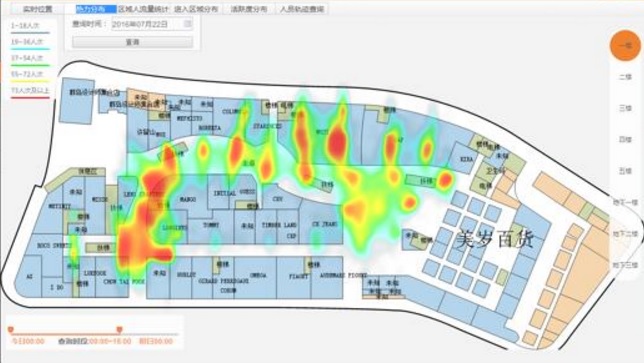TAG 15 , TAG 18
作者
digoal
日期
2017-04-13
标签
PostgreSQL , 递归查询 , 大屏播报 , 最拥堵的路口 , 最旺的商铺 , 某个区域最拥堵的厕所 , 数据透视 , 流式计算 , 时序数据
背景

随着物联网的发展,数据的产生越来越快。比如马路的汽车通过数据,用户的驻留数据,水纹传感器的数据,电商的FEED数据,网约车的轨迹数据 等等。
这么多的数据,用途也不一样,有需要流式实时统计的,也有时序处理相关需求的,还有全量分析需求的。
这些都有对应的解决方案。
《流计算风云再起 - PostgreSQL携PipelineDB力挺IoT》
《时序数据库有哪些特点? TimescaleDB时序数据库介绍》
《ApsaraDB的左右互搏(PgSQL+HybridDB+OSS) - 解决OLTP+OLAP混合需求》
以指挥中心的大屏为例,有一些需求就很有意思,比如
1. 展示最新的传感器TOP VALUE数据。
2. 选择时间轴,按区域,展示人流量。
例子
1 输出所有传感器上报的最新值
这个需要和我之前写的这个例子很相似。
《时序数据合并场景加速分析和实现 - 复合索引,窗口分组查询加速,变态递归加速》
设计表结构,gid表示传感器ID,val是上传的值,crt_time是时间。
假设有1万个传感器,插入1000万条记录。
create unlogged table sort_test(
id serial8 primary key, -- 自增主键
s_id int, -- 传感器ID
val numeric(10,2), -- 传感器值
crt_time timestamp default clock_timestamp() -- 上报时间
);
写入1000万传感器测试数据
postgres=# insert into sort_test (s_id,val) select random()*10000, random()*100 from generate_series(1,10000000);
INSERT 0 10000000
创建索引
postgres=# create index idx_test on sort_test using btree(s_id,id desc);
使用递归调用的方法,获取所有传感器的最新值(以每个传感器的最大的自增ID为最新上报标记)
```
create type r as (s_id int, val numeric(10,2)); -- 复合类型
with recursive skip as (
(
select (s_id,val)::r as r from sort_test where id in (select id from sort_test where s_id is not null order by s_id,id desc limit 1)
)
union all
(
select (
select (s_id,val)::r as r from sort_test where id in (select id from sort_test t where t.s_id>(s.r).s_id and t.s_id is not null order by s_id,id desc limit 1)
) from skip s where (s.r).s_id is not null
) -- 这里的where (s.r).s_id is not null 一定要加, 否则就死循环了.
)
select (t.r).s_id, (t.r).val from skip t where t.* is not null;
```
1000万条记录,筛选1万条最新记录,耗费时间:129毫秒。
为什么能这么快?因为用了递归,减少了扫描量和运算量。
s_id | val
-------+-------
0 | 83.55
1 | 91.62
2 | 72.70
3 | 45.46
4 | 99.97
5 | 17.04
6 | 8.96
7 | 25.83
8 | 28.10
9 | 26.19
10 | 83.03
11 | 1.30
......
Time: 128.779 ms
使用游标则更快,一次获取10条,仅花费0.36毫秒。
```
postgres=# begin;
BEGIN
Time: 0.095 ms
postgres=# declare cur cursor for with recursive skip as (
(
select (s_id,val)::r as r from sort_test where id in (select id from sort_test where s_id is not null order by s_id,id desc limit 1)
)
union all
(
select (
select (s_id,val)::r as r from sort_test where id in (select id from sort_test t where t.s_id>(s.r).s_id and t.s_id is not null order by s_id,id desc limit 1)
) from skip s where (s.r).s_id is not null
) -- 这里的where (s.r).s_id is not null 一定要加, 否则就死循环了.
)
select (t.r).s_id, (t.r).val from skip t where t.* is not null;
DECLARE CURSOR
Time: 0.841 ms
postgres=# fetch 10 from cur;
s_id | val
------+-------
0 | 83.55
1 | 91.62
2 | 72.70
3 | 45.46
4 | 99.97
5 | 17.04
6 | 8.96
7 | 25.83
8 | 28.10
9 | 26.19
(10 rows)
Time: 0.364 ms
```
2 输出某个城市的车流TOP 10路口

相比第一个例子,做了一次收敛,按VALUE排序,输出最大的。
假设每个路口有传感器不断上报路口通过的车流数量。大屏展示通过量最大的10个路口。
为了测试方便,我这里依旧使用第一个例子的数据,末尾加上。
```
postgres=# with recursive skip as (
(
select (s_id,val)::r as r from sort_test where id in (select id from sort_test where s_id is not null order by s_id,id desc limit 1)
)
union all
(
select (
select (s_id,val)::r as r from sort_test where id in (select id from sort_test t where t.s_id>(s.r).s_id and t.s_id is not null order by s_id,id desc limit 1)
) from skip s where (s.r).s_id is not null
) -- 这里的where (s.r).s_id is not null 一定要加, 否则就死循环了.
)
select (t.r).s_id, (t.r).val from skip t where t.* is not null order by 2 desc limit 10;
s_id | val
------+-------
997 | 99.99
2233 | 99.97
610 | 99.97
4 | 99.97
6735 | 99.96
545 | 99.93
2992 | 99.91
4747 | 99.90
543 | 99.89
7229 | 99.88
(10 rows)
Time: 126.052 ms
```
1000万条记录,筛选1万条最新记录,输出TOP 10,耗费时间:126毫秒。
3 某个区域,某个时间段,按钮人流量输出TOP 商铺

相比前两个例子,多了两个维度:
一个是时间维度,用户可以勾选时间段进行分析。另一个是区域维度,用户要勾选地区,输出地区内的数据。
思考:
空间索引不像B-TREE索引是有序存储的,空间索引是GIST索引,使用了类似聚类分区的结构,因此在进行多列复合时,GIST的空间查询结合索引排序输出第一条,是行不通的,会引入显示的SORT。
原理参考
《从难缠的模糊查询聊开 - PostgreSQL独门绝招之一 GIN , GiST , SP-GiST , RUM 索引原理与技术背景》
同时查询条件包含了时间区间作为条件,索引非驱动列(子段gid+VAL)的排序也是行不通的。
什么时候能使用复合索引的查询+排序?
仅仅当排序列前面的所有列都是等值查询时,才能使用隐式排序,并且索引的顺序要和排序的顺序一致。例如index(a,b,c)支持where a=? and b=? order by c,但是不支持where a> ? and b=? order by c等等。
重新规划测试数据,为了测试方便, 以point取代经纬度,真实业务可以使用geometry类型。
create table test (
id serial8 primary key, -- 自增序列
gid int, -- 商铺ID
val int, -- 商铺人流
pos point, -- 商铺位置, 为了测试方便, 以point取代经纬度
crt_time timestamp -- 上传时间
);
插入1000万测试数据,1万个店铺ID,1亿的点阵范围中的随机point。
```
postgres=# insert into test (gid,val,pos,crt_time) select random()10000, random()100000, point(random()10000, random()10000), clock_timestamp() from generate_series(1,10000000);
postgres=# select min(crt_time),max(crt_time) from test;
min | max
----------------------------+----------------------------
2017-04-13 20:04:18.969268 | 2017-04-13 20:04:54.578339
(1 row)
```
时间+空间 的快速传感器最大值筛选怎么加速呢?
分两种情况优化
1. 总的传感器(店铺)不多(例如1万个店铺)
利用索引快速搜索每个GID的最大VAL,使用partial index,规避时间问题;使用CPU完成点面判断。
例子,
例如我们允许用户勾选的最小时间范围是2小时,可以每2小时建一个partial index。(使用这么多partial index很变态,也不优雅。建议10.0的分区表优化后,每2小时切一个分区。)
create index idx_test_1 on test (gid, val desc) where crt_time between '2017-04-13 20:04:18.969268' and '2017-04-13 20:04:30.969268';
这个区间的总数据量, 约350万。
```
postgres=# select count(*) from test where crt_time between '2017-04-13 20:04:18.969268' and '2017-04-13 20:04:30.969268';
count
3461005
(1 row)
```
使用这个partial index,以及递归调用,取出该区间的所有店铺的最大值。然后根据点面判断,得到某个区域的数据,再排序输出TOP 10。
with recursive skip as (
(
select t0 from test t0 where id in
(select id from test where gid is not null and crt_time between '2017-04-13 20:04:18.969268' and '2017-04-13 20:04:30.969268' order by gid,val desc limit 1) -- 时间参数,取出最小GID的最大val。作为启动记录
)
union all
(
select (
select t1 from test t1 where id in (select id from test t where t.gid > (s.t0).gid and t.gid is not null
and crt_time between '2017-04-13 20:04:18.969268' and '2017-04-13 20:04:30.969268' -- 时间参数
order by gid,val desc limit 1)
) from skip s where (s.t0).gid is not null
) -- 这里的where (s.t0).gid is not null 一定要加, 否则就死循环了.
)
select (t.t0).* from skip t where t.* is not null
and circle '((5000,5000), 1000)' @> (t.t0).pos -- 区域参数
order by (t.t0).val desc limit 10; -- 取出前十的店铺
135毫秒返回
```
id | gid | val | pos | crt_time
---------+------+-------+-------------------------------------+----------------------------
1754353 | 4001 | 99997 | (4755.64117543399,5253.53815406561) | 2017-04-13 20:04:24.563999
600729 | 5874 | 99996 | (5507.96090625226,4394.04523000121) | 2017-04-13 20:04:20.851141
1137330 | 4248 | 99995 | (4332.14340358973,4383.84034205228) | 2017-04-13 20:04:22.575639
2609044 | 7209 | 99995 | (5809.22217573971,4967.18854177743) | 2017-04-13 20:04:27.328745
1330926 | 2834 | 99994 | (4153.9505450055,4986.64934188128) | 2017-04-13 20:04:23.197925
208578 | 3439 | 99994 | (4186.14753056318,5103.39797474444) | 2017-04-13 20:04:19.598547
703010 | 5736 | 99993 | (4913.89285307378,4628.21466382593) | 2017-04-13 20:04:21.178653
298380 | 7680 | 99992 | (4539.91844784468,4454.29485291243) | 2017-04-13 20:04:19.884725
996318 | 7658 | 99992 | (4462.14715018868,5504.16304729879) | 2017-04-13 20:04:22.122626
3120169 | 3261 | 99991 | (4814.33014851063,4505.81138487905) | 2017-04-13 20:04:28.98197
(10 rows)
Time: 135.480 ms
```
执行计划如下
```
Limit (cost=937.82..937.83 rows=1 width=40) (actual time=147.241..147.243 rows=10 loops=1)
Output: ((t.t0).id), ((t.t0).gid), ((t.t0).val), ((t.t0).pos), ((t.t0).crt_time)
Buffers: shared hit=80066
CTE skip
-> Recursive Union (cost=1.00..935.54 rows=101 width=64) (actual time=0.037..141.284 rows=10002 loops=1)
Buffers: shared hit=80066
-> Nested Loop (cost=1.00..9.03 rows=1 width=64) (actual time=0.036..0.036 rows=1 loops=1)
Output: t0.
Inner Unique: true
Buffers: shared hit=8
-> HashAggregate (cost=0.57..0.58 rows=1 width=8) (actual time=0.022..0.023 rows=1 loops=1)
Output: test.id
Group Key: test.id
Buffers: shared hit=4
-> Limit (cost=0.43..0.55 rows=1 width=16) (actual time=0.017..0.018 rows=1 loops=1)
Output: test.id, test.gid, test.val
Buffers: shared hit=4
-> Index Scan using idx_test_1 on public.test (cost=0.43..431864.13 rows=3461209 width=16) (actual time=0.017..0.017 rows=1 loops=1)
Output: test.id, test.gid, test.val
Index Cond: (test.gid IS NOT NULL)
Buffers: shared hit=4
-> Index Scan using test_pkey on public.test t0 (cost=0.43..8.45 rows=1 width=72) (actual time=0.012..0.012 rows=1 loops=1)
Output: t0., t0.id
Index Cond: (t0.id = test.id)
Buffers: shared hit=4
-> WorkTable Scan on skip s (cost=0.00..92.45 rows=10 width=32) (actual time=0.014..0.014 rows=1 loops=10002)
Output: (SubPlan 1)
Filter: ((s.t0).gid IS NOT NULL)
Rows Removed by Filter: 0
Buffers: shared hit=80058
SubPlan 1
-> Nested Loop (cost=1.20..9.22 rows=1 width=64) (actual time=0.013..0.013 rows=1 loops=10001)
Output: t1.
Inner Unique: true
Buffers: shared hit=80058
-> HashAggregate (cost=0.76..0.77 rows=1 width=8) (actual time=0.009..0.009 rows=1 loops=10001)
Output: t_1.id
Group Key: t_1.id
Buffers: shared hit=40033
-> Limit (cost=0.43..0.75 rows=1 width=16) (actual time=0.008..0.008 rows=1 loops=10001)
Output: t_1.id, t_1.gid, t_1.val
Buffers: shared hit=40033
-> Index Scan using idx_test_1 on public.test t_1 (cost=0.43..369056.35 rows=1153736 width=16) (actual time=0.008..0.008 rows=1 loops=10001)
Output: t_1.id, t_1.gid, t_1.val
Index Cond: ((t_1.gid > (s.t0).gid) AND (t_1.gid IS NOT NULL))
Buffers: shared hit=40033
-> Index Scan using test_pkey on public.test t1 (cost=0.43..8.45 rows=1 width=72) (actual time=0.003..0.003 rows=1 loops=10000)
Output: t1., t1.id
Index Cond: (t1.id = t_1.id)
Buffers: shared hit=40025
-> Sort (cost=2.28..2.29 rows=1 width=40) (actual time=147.240..147.241 rows=10 loops=1)
Output: ((t.t0).id), ((t.t0).gid), ((t.t0).val), ((t.t0).pos), ((t.t0).crt_time)
Sort Key: ((t.t0).val) DESC
Sort Method: top-N heapsort Memory: 26kB
Buffers: shared hit=80066
-> CTE Scan on skip t (cost=0.00..2.27 rows=1 width=40) (actual time=0.252..147.138 rows=317 loops=1)
Output: (t.t0).id, (t.t0).gid, (t.t0).val, (t.t0).pos, (t.t0).crt_time
Filter: ((t.* IS NOT NULL) AND ('<(5000,5000),1000>'::circle @> (t.t0).pos))
Rows Removed by Filter: 9685
Buffers: shared hit=80066
Planning time: 0.508 ms
Execution time: 147.505 ms
(62 rows)
```
2. 店铺很多,但是时间+空间收敛后,记录数不多(比如几百万)
这种情况,可以考虑使用时间分区表。然后构建空间索引。
通过时间条件,定位到指定的分区,通过空间索引,筛选数据。对筛选后的数据,通过少量CPU计算得到TOP店铺。
例子
2.1 将表按时间分区(例如每2小时一个分区,前面有介绍为什么这么做)
略,我这里假设每两小时约1千万数据。
2.2 创建空间索引
postgres=# create index idx_test_gist on test using gist(pos);
CREATE INDEX
2.3 透视
SQL中输入时间条件时,PostgreSQL会自动锁定到分区表,我这里为了简便,直接写TEST表。
使用窗口查询,得到TOP SQL
select * from
(
select row_number() over(partition by gid order by val desc) as rn, * from test
where
circle '((5000,5000), 1000)' @> pos -- 区域参数
) t
where rn = 1 -- 取出该区间内每个店铺的最大值
order by val desc limit 10; -- 取出前十的店铺
效率
```
rn | id | gid | val | pos | crt_time
----+---------+------+-------+-------------------------------------+----------------------------
1 | 7859807 | 2311 | 99999 | (4900.04640072584,4950.79724118114) | 2017-04-13 20:04:46.013424
1 | 4658616 | 3699 | 99999 | (5625.03716442734,5338.90711143613) | 2017-04-13 20:04:35.467025
1 | 1754353 | 4001 | 99997 | (4755.64117543399,5253.53815406561) | 2017-04-13 20:04:24.563999
1 | 6076598 | 4610 | 99997 | (5679.03681658208,4793.08029171079) | 2017-04-13 20:04:40.09587
1 | 6139261 | 4069 | 99997 | (5225.87833926082,4101.83480009437) | 2017-04-13 20:04:40.301817
1 | 600729 | 5874 | 99996 | (5507.96090625226,4394.04523000121) | 2017-04-13 20:04:20.851141
1 | 4281282 | 9720 | 99996 | (5036.95292398334,4731.64941649884) | 2017-04-13 20:04:34.237957
1 | 5579952 | 1503 | 99996 | (4271.09604235739,5250.28191972524) | 2017-04-13 20:04:38.469311
1 | 5310205 | 1317 | 99995 | (4439.0160869807,4796.70224711299) | 2017-04-13 20:04:37.590451
1 | 1137330 | 4248 | 99995 | (4332.14340358973,4383.84034205228) | 2017-04-13 20:04:22.575639
(10 rows)
Time: 633.342 ms
```
执行计划
Limit (cost=39265.88..39265.91 rows=10 width=48) (actual time=730.704..730.706 rows=10 loops=1)
Output: t.rn, t.id, t.gid, t.val, t.pos, t.crt_time
Buffers: shared hit=317037, temp read=1921 written=1928
-> Sort (cost=39265.88..39266.01 rows=50 width=48) (actual time=730.702..730.703 rows=10 loops=1)
Output: t.rn, t.id, t.gid, t.val, t.pos, t.crt_time
Sort Key: t.val DESC
Sort Method: top-N heapsort Memory: 26kB
Buffers: shared hit=317037, temp read=1921 written=1928
-> Subquery Scan on t (cost=38939.80..39264.80 rows=50 width=48) (actual time=520.846..728.927 rows=10001 loops=1)
Output: t.rn, t.id, t.gid, t.val, t.pos, t.crt_time
Filter: (t.rn = 1)
Rows Removed by Filter: 303477
Buffers: shared hit=317037, temp read=1921 written=1928
-> WindowAgg (cost=38939.80..39139.80 rows=10000 width=48) (actual time=520.844..703.933 rows=313478 loops=1)
Output: row_number() OVER (?), test.id, test.gid, test.val, test.pos, test.crt_time
Buffers: shared hit=317037, temp read=1921 written=1928
-> Sort (cost=38939.80..38964.80 rows=10000 width=40) (actual time=520.837..594.505 rows=313478 loops=1)
Output: test.gid, test.val, test.id, test.pos, test.crt_time
Sort Key: test.gid, test.val DESC
Sort Method: external merge Disk: 15368kB
Buffers: shared hit=317037, temp read=1921 written=1928
-> Index Scan using idx_test_gist on public.test (cost=0.42..38275.42 rows=10000 width=40) (actual time=0.240..336.235 rows=313478 loops=1)
Output: test.gid, test.val, test.id, test.pos, test.crt_time
Index Cond: ('<(5000,5000),1000>'::circle @> test.pos)
Buffers: shared hit=317037
Planning time: 0.140 ms
Execution time: 734.226 ms
(27 rows)
内核层面优化(空间GRID分区表的支持)
让PostgreSQL支持空间GRID分区(实际上你现在就可以使用继承来实现,触发器中使用grid+mod判断应该插入哪个分区)。
参考如下
《蜂巢的艺术与技术价值 - PostgreSQL PostGIS's hex-grid》

对于时间+空间维度的数据透视,可以创建空间grid分区 + 时间分区 二级分区。
检索时,通过分区表直接过滤到目标子分区表。再通过btree索引,递归调用,筛选出每个店铺在候选区间的峰值数据,最后加上少量CPU运算,得到TOP店铺。
使用这种方法,时间+空间的四维数据透视,查询效率可以进入100毫秒以内。
业务优化方法
1. 对于例子1和2,由于业务层面取的都是最近的数据,历史数据并不关心。除了使用递归优化,还有2种方法。
方法1,不记录历史,将插入换成插入或更新。使用这种方法,查询sort_test得到的始终是最新的值。
```
create unlogged table sort_test(
s_id int primary key, -- 传感器ID
val numeric(10,2), -- 传感器值
crt_time timestamp default clock_timestamp() -- 上报时间
);
insert into sort_test(s_id,val,crt_time) values (?,?,?) on conflict (s_id) do update set val=excluded.val,crt_time=excluded.crt_time;
```
方法2,记录历史,同时记录最新状态。使用触发器完成这项工作。
分解:
数据插入时,自动更新最后一条记录。(写入量和更新量同等)
例子
创建一个状态表记录最新状态,创建一个触发器,写入历史数据时,自动更新最新状态表。
```
create unlogged table hist(
id serial8 primary key, -- 自增主键
s_id int, -- 传感器ID
val numeric(10,2), -- 传感器值
crt_time timestamp default clock_timestamp() -- 上报时间
);
create unlogged table hist_stat(
s_id int primary key, -- 传感器ID
val numeric(10,2), -- 传感器值
crt_time timestamp default clock_timestamp() -- 上报时间
);
create or replace function tg() returns trigger as $$
declare
begin
insert into hist_stat (s_id,val,crt_time) values (NEW.s_id,NEW.val,NEW.crt_time) on conflict (s_id) do update set val=excluded.val,crt_time=excluded.crt_time;
return null;
end;
$$ language plpgsql strict;
create trigger tg after insert on hist for each row execute procedure tg();
```
插入数据,自动更新到最新状态
```
postgres=# insert into hist(s_id,val) values(1,1);
INSERT 0 1
postgres=# insert into hist(s_id,val) values(1,1);
INSERT 0 1
postgres=# insert into hist(s_id,val) values(1,1);
INSERT 0 1
postgres=# insert into hist(s_id,val) values(1,1);
INSERT 0 1
postgres=# insert into hist(s_id,val) values(1,1);
INSERT 0 1
postgres=# select * from hist;
id | s_id | val | crt_time
----+------+------+----------------------------
3 | 1 | 1.00 | 2017-04-13 22:23:25.165286
4 | 1 | 1.00 | 2017-04-13 22:23:26.23929
5 | 1 | 1.00 | 2017-04-13 22:23:26.646152
6 | 1 | 1.00 | 2017-04-13 22:23:26.991189
7 | 1 | 1.00 | 2017-04-13 22:23:27.376265
(5 rows)
postgres=# select * from hist_stat ;
s_id | val | crt_time
------+------+----------------------------
1 | 1.00 | 2017-04-13 22:23:27.376265
(1 row)
```
查询时,直接查询最新状态表,连递归调用都省了。
postgres=# select * from hist_stat ;
s_id | val | crt_time
------+------+----------------------------
1 | 1.00 | 2017-04-13 22:23:27.376265
(1 row)
2. 对于例子3,由于分析的是历史数据,而且分析维度是时间和空间两个维度。
因此可以将其中一个维度作为分区,将数据打散,打散之后,对分区建立另一个维度的索引。
这样的话,在查询时,可以将数据尽量的收敛到更小的范围。
空间和时间都支持分区。(空间分区建议使用网格化的表述,便于查找和定位分区)。
参考
《流计算风云再起 - PostgreSQL携PipelineDB力挺IoT》
《时序数据库有哪些特点? TimescaleDB时序数据库介绍》
《ApsaraDB的左右互搏(PgSQL+HybridDB+OSS) - 解决OLTP+OLAP混合需求》
《时序数据合并场景加速分析和实现 - 复合索引,窗口分组查询加速,变态递归加速》
《从难缠的模糊查询聊开 - PostgreSQL独门绝招之一 GIN , GiST , SP-GiST , RUM 索引原理与技术背景》
《蜂巢的艺术与技术价值 - PostgreSQL PostGIS's hex-grid》
PostgreSQL 许愿链接
您的愿望将传达给PG kernel hacker、数据库厂商等, 帮助提高数据库产品质量和功能, 说不定下一个PG版本就有您提出的功能点. 针对非常好的提议,奖励限量版PG文化衫、纪念品、贴纸、PG热门书籍等,奖品丰富,快来许愿。开不开森.
9.9元购买3个月阿里云RDS PostgreSQL实例
PostgreSQL 解决方案集合
德哥 / digoal's github - 公益是一辈子的事.










